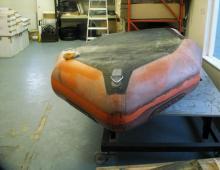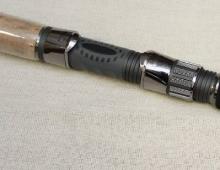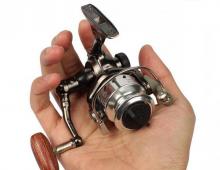Making 8 do-it-yourself feeder rigs
1. The most popular feeder rig is the paternoster loop (or Gardner's paternoster)
There are quite a large number of rigs for catching carp, crucian carp, bream and many other fish, and the whole question is in what conditions to catch, what kind of fish to hunt and what food to use. Once you can answer these questions, you will be able to choose your feeder rig from this guide.
Feeder rigs are distinguished by four criteria:
- is/is not a self-cutting rig;
- equipment for bottom fishing or not;
- for fishing on the course or in stagnant water;
- for fishing on hard ground or unsteady (silt);
Our article will give you the right direction in choosing, and will also help you make the correct installation of feeder equipment with your own hands.
Brief description of all types of feeder equipment

2. Inline feeder rig is good for larval feeders and "Method" feeders, the convenience of rigging is that the feeder is very easy to replace with a sinker
In total, we will show 8 feeder rigs, the list is in this order according to the rig popularity rating calculated by our editors.


8. Feeder equipment with an anti-twist tube (from year to year it is used less and less)
Fishing conditions
For each of the terrain options and other characteristic features, we will compile a list of rigs that can be used. The lists will start with the most attractive and simple rigs.
On muddy ground, use:
- Paternoster Gardner is the simplest and most convenient equipment that fits right on the fishing trip. Allows you to maintain the sensitivity of bites, even when the feeder drowned in silt.
- Helicopter - for long casts.
- Combine.
If long distance casts are required:
- Biting activator. This pheromone additive lures fish the most in cold and warm water. .
- Raise gear sensitivity. Read the appropriate manuals for the particular type of tackle.
- Lures based pheromones.
Installation of feeder gear
The equipment of the feeder rod is carried out in the following 4 steps:
- The feeder rod is assembled by connecting all the collapsible knees (this is a composite rod), if the rod is telescopic, it simply unfolds.
- A reel is attached to the rod
- The shackle of the line stacker opens and the fishing line is threaded through all the rings, starting from the one closest to the reel and ending with the tip of the rod. The shackle of the line stacker is closed.
- At the end of the fishing line, a loop is made with a figure-eight knot, to which your feeder rig (rigging) is then attached using the loop-to-loop method.



